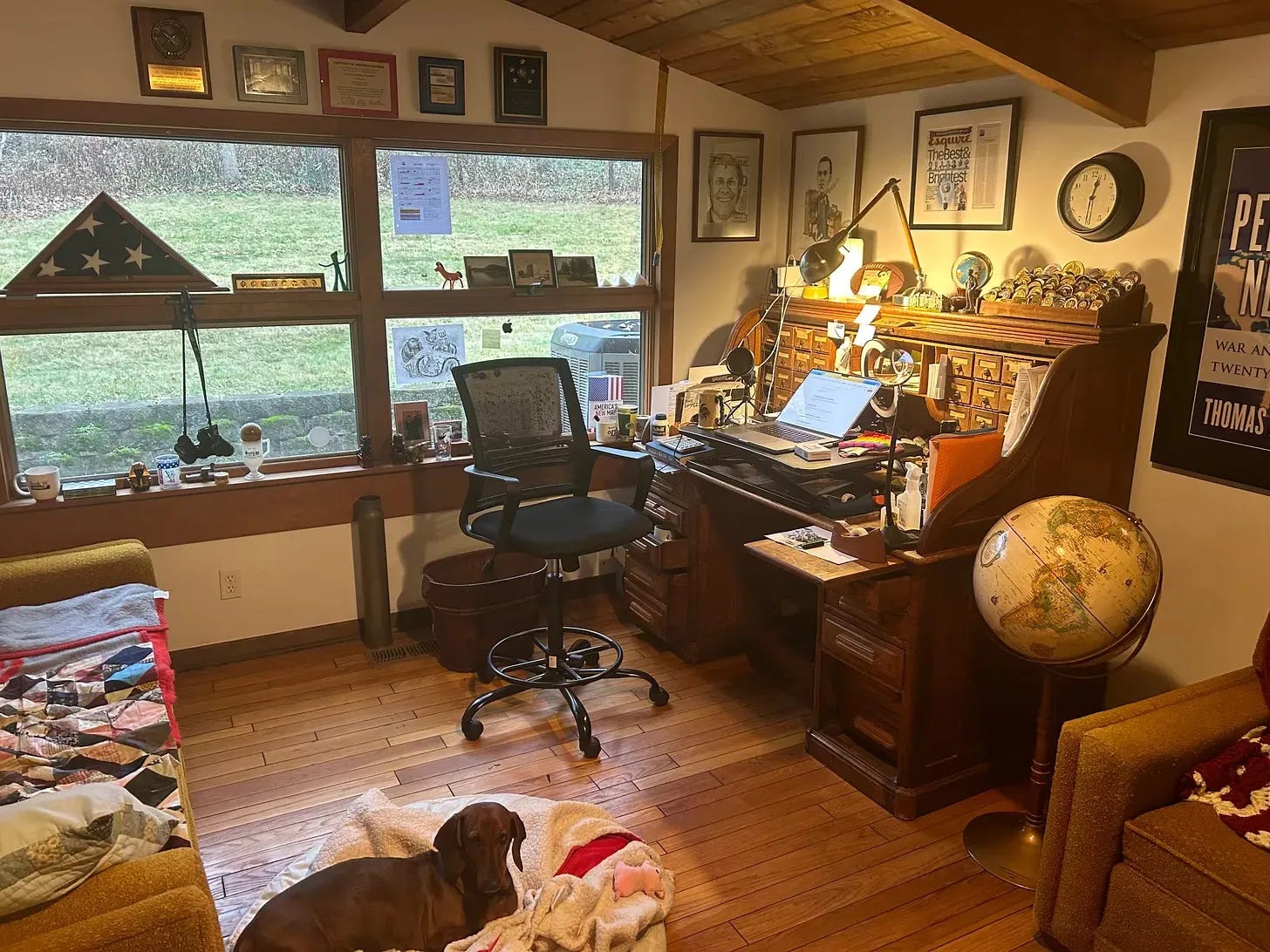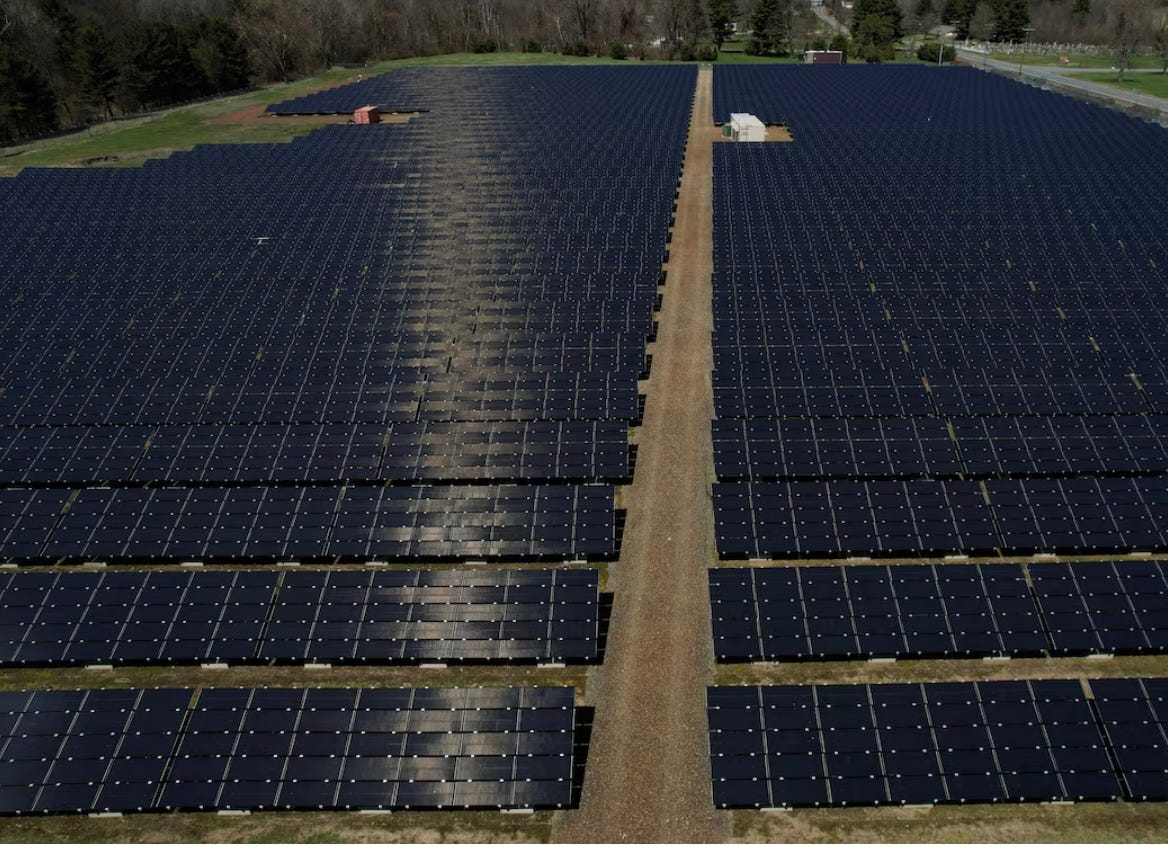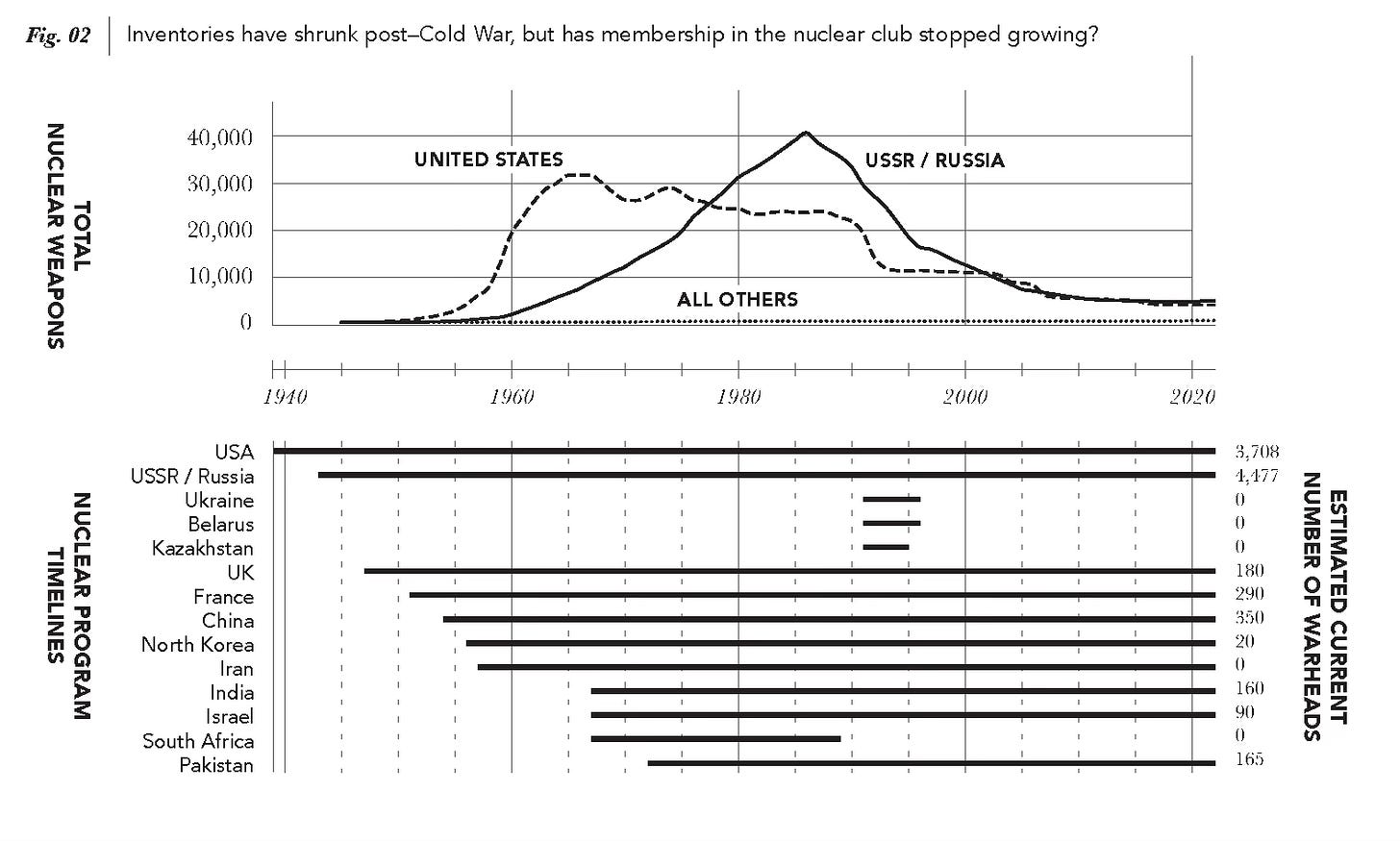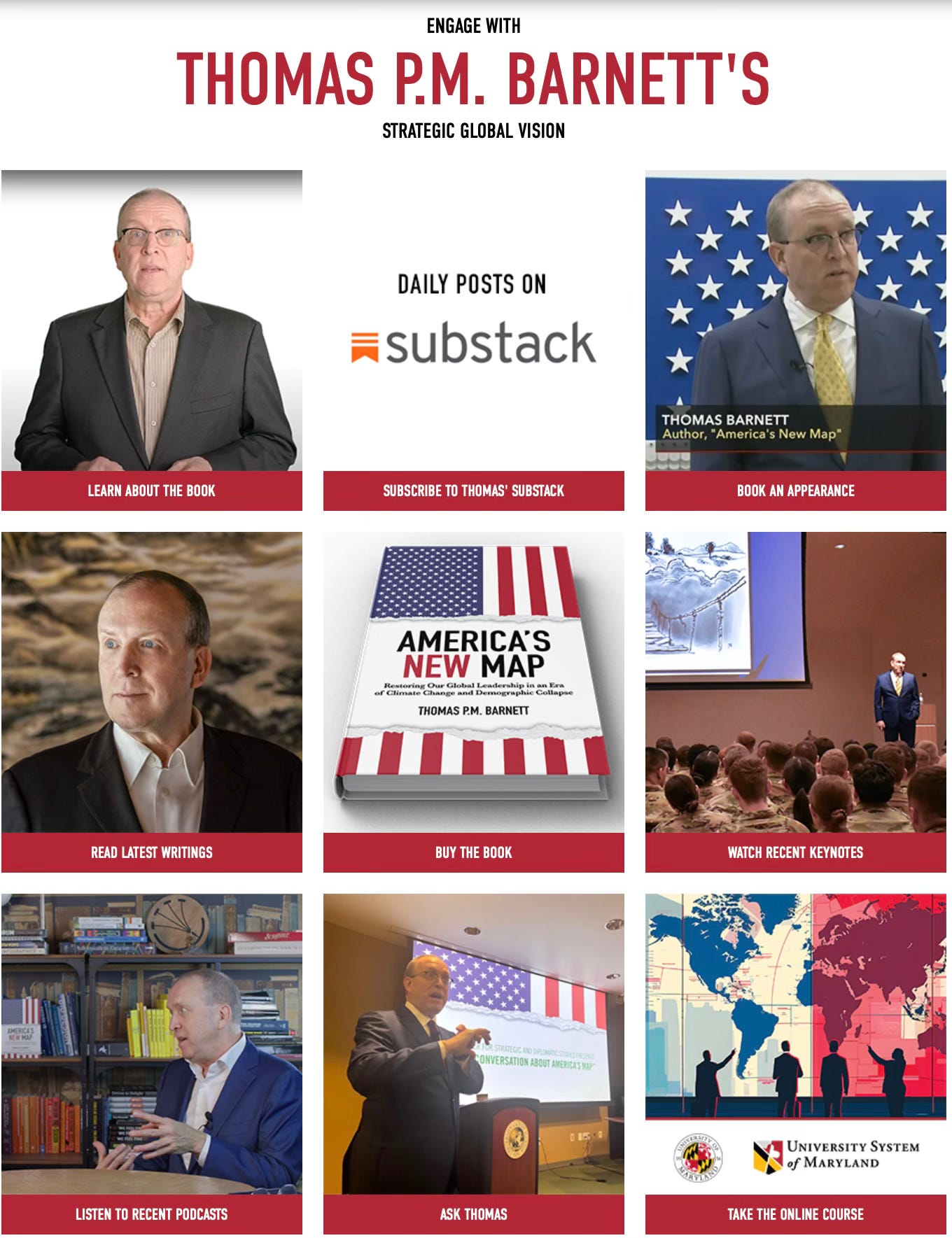This is a reader-supported publication. I give it all away for free but could really use your support if you want me to keep doing this.
1) Putin’s piggy bank running low
YAHOO: Russia is on pace to run out of financial reserves by this fall, which would cripple war efforts, economist says
Anders Aslund is the dean of Western economists who once studied the USSR and now decodes the Russian Federation. When he talks, I listen.
Russia is facing a critical challenge to its war effort in 2025: The nation is quickly running out of cash, with financial reserves potentially running out before the end of the year, one European economist estimates.
Anders Åslund, a Swedish economist who's a former fellow at the Atlantic Council, has said liquid reserves in Russia's National Wealth Fund could be depleted by the fall of this year.
Putin has been financing his costly war in Ukraine by basically looting the nation’s energy-derived sovereign wealth fund.
Liquid reserves in the wealth fund have been drawn down from $117 billion in 2021 to $31 billion as of the end of November, Åslund noted.
Yet, according to its 2025 budget, Russia is on track to spend a record $130.5 billion on defense this year.
Unsustainable.
Putin had to draw down on the fund because he couldn’t borrow from abroad due to US sanctions.
The consensus judgment: Russia really can’t afford to fight this war beyond 2025.
Trump, of course, knows all this, and one hopes he puts that knowledge to good use.
2) China just fine with 90-day pause on tariffs
WAPO: China celebrates hard-line stance after trade deal with U.S.
China feels like it won the big tariff showdown in Geneva last weekend, and it has good reason to feel that way:
Many analysts agree broadly with the take in Beijing, noting that China did little more than show up to talks to gain significant concessions.
“They’ve really given nothing and have had Trump back down, and it didn’t take weeks of excruciating negotiations. It seems to have taken one weekend,” said Richard McGregor, senior fellow for East Asia at the Sydney-based Lowy Institute. “You have to say it’s round one for China.”
Another Western financial expert dubbed it “another substantial retreat” by the Trump Administration.
Naturally, the White House sees it differently, but, then, they see everything differently.
It is interesting though to see Trump traveling the Persian Gulf looking to collect checks (and a luxury airplane, while he’s at it!) while Xi is hosting Latin American and Caribbean nations (30 in all) in Beijing and writing checks. There is some sad symmetry there.
3) Don’t bite the hand of those you are feeding
WSJ: China Is Building Megaports in South America to Feed Its Need for Crops
The subtitle is disturbing:
State grain trader Cofco plans world’s biggest export terminal in Brazil to substitute U.S. soybeans and other foodstuffs.
I mean, it’s almost like China was expecting Trump’s tariff gambit … am I right?
The Santos port fits into China’s wider plan to secure access to South America’s agricultural bounty amid shortages of water and arable land at home. Chinese companies are laying hundreds of miles of railroad across Brazil’s agricultural heartland and finishing work on a $3.5 billion deep-water port on Peru’s Pacific coast.
The trade war with the U.S. has heightened the urgency of these projects.
I dunno, but maybe the Chinese aren’t going to kiss Trump’s ass, as he so delights in saying.
Brazil cleaned up in Trump 1.0’s tariff-wars-are-easy-to-win:
“You only have to see what happened in the first Trump administration,” said Cláudia Trevisan, head of the Brazil-China Business Council. “Trump imposed tariffs on imports from China, China retaliated, and Brazil increased its exports to China of products that the U.S. also used to supply, mainly soybeans.”
This time around, Brazil can only increase its lead over the US in terms of exports:
By 2023, Brazil accounted for about a quarter of Chinese agricultural imports, while the U.S. share had dropped to about 14%, government data show. Brazil now supplies about 70% of soybean shipments to China.
Brazil right now is operating at max ag capacity, and that’s with three growing seasons per year.
Can Trump get Xi to promise to buy more soybeans etc. like last time around?
Sure.
And China can underperform on that promise again — just like last time?
While China did resume buying US soybeans after the first tariff war with Trump, the purchases were far less than promised and did not meet the targets set in the agreement. The gap was due to a mix of unrealistic targets, ongoing tariffs, supply chain disruptions (see COVID), and China's successful diversification of its soybean imports away from the US.
Expect the same sleight-of-hand outcome this time around, with US farmers getting screwed in the end — just like last time.
And understand: when you lose overseas export markets for agricultural commodities, they tend to stay lost. Mess with people’s food security and they tend to hold that against you for a good long time.
4) About that new designated military zone …
NYT: Judge Dismisses ‘Trespassing’ Charges Promoted by Trump in Border ‘Defense Area’
Wrote about this last Cutdown. Repeating here simply for the graphic above, along with — of course — news that a federal judge dismissed the whole trick.
I repeat my fear: if the USG can simply create “national defense areas” out of thin air, then what’s to stop them from drawing a circle around my sanctuary city, claiming that ring is a “national defense area” and then having armed troops operate within that ring to check out everybody and anybody trying to penetrate that space or leave it?
Then there are the practical problems associated with this trick:
Since the new military area was established, volunteers who scour the desert for the remains of perished migrants have started to worry that they could be arrested. Hikers determined to traverse the storied, 3,100-mile Continental Divide Trail to Canada face legal uncertainties, since their trek begins or ends at the border. Hunters who frequent the wide-open public lands in the area are worried about running into active-duty troops when they are out stalking quail or white-tailed deer.
“Imagine me hunting in the mountains, and some Army guys see me in camouflage with a gun,” said Ray Trejo, a Democratic commissioner of Luna County, which sits along the border. “The administration didn’t think this through.”
Oh, the administration thought it through alright. They just didn’t care about such details — as in, the scarier they make the border, the more they are convinced it is secure on a self-deterring basis.
It’s the same basic DOGE logic being applied to federal workers: make them too scared to even show up at the office so they’ll eventually quit.
Seems a bit weird, does it not, that the people previously selling you on hating your government now just want you to fear it?
5) Our Americans are better than your Americans (or “loose nukes, part duh!”)
NYT: The World Is Wooing U.S. Researchers Shunned by Trump
Here’s the historical reference from America’s New Map:
Inside the US national security community across the early decades of the Cold War, there arose the following tagline to explain how America kept ahead of the Soviets on arms and space racing: “Our Germans are better than their Germans.” That toss-off statement expressed the judgment that the United States had bested the USSR in snatching up Nazi Germany’s top scientific talent at the end of World War II. True or not (and it was mostly true), the key concept here is the wisdom of symmetry when assembling national assets for employment in a competition or conflict. In other words, show up with the appropriate weapon.
That was then, this is now:
As President Trump cuts billions of federal dollars from science institutes and universities, restricts what can be studied and pushes out immigrants, rival nations are hoping to pick up talent that has been cast aside or become disenchanted.
America has long benefited from other nations’ “brain drains,” or top scientific talent leaving their home nations and coming to America because the research opportunities here were both better and more plentiful.
Trump is going to great lengths to reverse that brain flow:
In 2024, the United States spent nearly $1 trillion — roughly 3.5 percent of total economic output — on research and development. When it came to the kind of long-term basic research that underpins American technological and scientific advancements, the government accounted for about 40 percent of the spending.
That’s the reason political, education and business leaders in advanced countries and emerging economies have long fretted over a brain drain from their own shores. Now they are seizing a chance to reverse the flow.
Naturally, all our competition is looking to cash in:
“This is a once-in-a-century brain gain opportunity,” the Australian Strategic Policy Institute declared, as it encouraged its government to act.
My scientific lead, your scientific lead!
Who needs experts anyway? They’re about as useful as free healthcare, which many European states are citing as yet another reason to jump ship from America under Trump.
Well … the joke’s on them, because we live longer here in the States thanks to our superior — if costly — medical insurance!
What? Europe’s poor live longer and healthier than America’s rich? Where in God’s name do they come up with this stuff?
Gotta be fake news …
Or just consider this yet another part of Trump’s Apology Tour — as in, We stole all your talent in the past but now we’re sending them back to you, so, you’re welcome! And be great again!
Last note: doesn’t this remind you of US fears about Russian nuclear scientists leaving after the Soviet collapse and taking all that dangerous knowledge to rogue nations or terror groups? I mean, there has to be some potential for that this go-around, yes?
6) Just say no to India!
BLOOMBERG: Trump Asks Apple to Stop Moving iPhone Production to India
Trump indicates he has a problem with Tim Cook building Apple factories in India, which is presently emerging as THE cheap labor capital of the global economy this decade and into the next.
Hmm: Would I rather continue being a global leader in smartphones sales or market the most expensive smartphone in the world?
Tough call.
Can I get back to you on this, Mr. President, say … around January 2029?
Apple is moving production from China to India ostensibly to reduce its supply chain reliance on the former, when it’s really the latter’s ongoing demographic dividend that is pulling production to South Asia.
Trump can have a “little problem” with Cook’s decision making, that’s fine. But as for the larger demographic forces at work here? Well, good luck with that one, Mr. President.
7) The Singularity inches a bit closer
NYT: Baby Is Healed With World’s First Personalized Gene-Editing Treatment
The baby shouldn’t be alive:
Something was very wrong with Kyle and Nicole Muldoon’s baby.
The doctors speculated. Maybe it was meningitis? Maybe sepsis?
They got an answer when KJ was only a week old. He had a rare genetic disorder, CPS1 deficiency, that affects just one in 1.3 million babies. If he survived, he would have severe mental and developmental delays and would eventually need a liver transplant. But half of all babies with the disorder die in the first week of life.
The kid has one of those rare genetic disorders that, in is low frequency, does not earn the attention and R&D of the medical industry.
So, what do you do when you have what is essentially a one-off disorder that dooms you?
You have some very special docs develop a one-off gene-editing therapy — just for you:
The baby, now 9 ½ months old, became the first patient of any age to have a custom gene-editing treatment, according to his doctors. He received an infusion made just for him and designed to fix his precise mutation.
What is the future of this sort of medicine in America? According to President Chaos, not so good. That federal R&D money is going away, as are the scientists making the breakthroughs (see #5 above).
This new therapy was built on decades of federal research grants.
This new technique is considered applicable to sickle cell disease, cystic fibrosis, Huntington’s disease, and muscular dystrophy — just to name four biggies.
But here’s the problem:
The story of KJ’s bespoke gene-editing treatment began on the evening of Aug. 8, when Dr. Kiran Musunuru, a gene-editing researcher at the University of Pennsylvania got an email from Dr. Rebecca Ahrens-Nicklas at the Children’s Hospital of Philadelphia.
Hmm. Let’s say Dr. Musunuru is one of those academic researchers who loses federal funding or feels the career need to escape America right now. What happens to this sort of cutting-edge research? Does it get back-burnered? Set-aside?
I fear we’re going to find out soon enough across a host of similar biotech domains.
8) The Centaur Solution strikes again!
NYT: Your A.I. Radiologist Will Not Be With You Soon
AI was supposed to make radiologists obsolete, easily outperforming them.
Turns out, the Mayo Clinic embraced the technology whole-heartedly and decided to hire even more radiologists.
The predicted extinction of radiologists provides a telling case study. So far, A.I. is proving to be a powerful medical tool to increase efficiency and magnify human abilities, rather than take anyone’s job.
Turns out that even if AI beats radiologists, it’s still true that AI + radiologists beats AI alone.
Why so here?
Radiologists do far more than study images. They advise other doctors and surgeons, talk to patients, write reports and analyze medical records. After identifying a suspect cluster of tissue in an organ, they interpret what it might mean for an individual patient with a particular medical history, tapping years of experience.
Predictions that A.I. will steal jobs often “underestimate the complexity of the work that people actually do — just as radiologists do a lot more than reading scans,” said David Autor, a labor economist at the Massachusetts Institute of Technology.
Understand? Experts … good, and experts with AI … even better and capable of new and amazing feats.
The Mayo Clinic reports that AI is pretty much everywhere in their medical system today … and that their radiologists on staff have grown by 55% over the same time period — just to take full advantage.
Remember this, because you’re going to read this story again and again and again in coming years.
9) China: I’ll be watching you … and you … and you …
REUTERS: Ghost in the machine? Rogue communication devices found in Chinese inverters
Turns out some weird little comms device is hidden in Chinese inverters used in solar power — almost like some backdoor into all that big data.
U.S. energy officials are reassessing the risk posed by Chinese-made devices that play a critical role in renewable energy infrastructure after unexplained communication equipment was found inside some of them, two people familiar with the matter said.
Power inverters, which are predominantly produced in China, are used throughout the world to connect solar panels and wind turbines to electricity grids. They are also found in batteries, heat pumps and electric vehicle chargers.
This is how China plans to turn the Internet of Things into the Internet of Omniveillance.
And, if that fails to do the trick?
Using the rogue communication devices to skirt firewalls and switch off inverters remotely, or change their settings, could destabilise power grids, damage energy infrastructure, and trigger widespread blackouts, experts said.
"That effectively means there is a built-in way to physically destroy the grid," one of the people said.
And you thought only the Israelis were that fiendishly clever!
10) The Military Singularity singles out the lost utility of traditional platforms
FORBES: After Losing 1,000 Tanks, Ukraine Is Rethinking How It Uses The Heavily Armed Vehicles
Ya think?
After losing more than 1,000 tanks, many of them to Russian drones, Ukrainian leaders have accepted that the heavy, powerfully armed fighting vehicles need to operate differently if they’re going to survive on a battlefield where tiny drones are everywhere all the time.
It’s a sad day when you need to tell your tanks not to cluster because it makes them too inviting a target.
This is not the warfare I grew up with!
11) A map after my own heart
VISUAL CAPITALIST: The Size of Each Country’s Shadow Economy
Look closely and you’ll see a very Core-Gap breakdown per The Pentagon’s New Map.
Not perfect, but pretty damn consistent in that Gap countries, on average, have much bigger-share shadow economies than Core countries do.
12) With prices like this, you’d have to be MAD to keep up your nuclear arsenal!
AXIOS: 1 big thing: Nukes' $1 trillion price tag
MAD (mutually assured destruction) has been a very good thing for a very long time, but, to keep it up-to-date and avoid safety issues, the US is looking at a $1T bill.
What we're watching: Where today's obsession with cheap mass (drones and artillery shells, for example) clashes with revered and rarely used stockpiles.
Nuclear acquisition programs represent almost 12% of the Defense Department's planned buying costs over the next decade, according to the CBO. That means DOD will have to make "difficult choices about which programs to pursue."
That nuclear triad is beginning to look like a luxurious expense.
But here’s the tricky question: in a cyber-conflicted and drone-drenched battlespace, which legs of the three are most vulnerable?
Your gut instinct is probably like mine: you place your bet on the Boomers (nuclear missile subs) being the most untouchable. Others will argue that strategic air bombers are the safest bet. What seems clear is that land-based ICBMs are the most vulnerable and thus least likely to be updated at such cost.
Something to ponder …
SYNT!





















